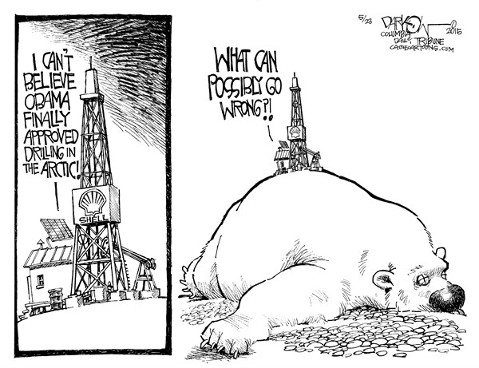Oil and Water Don’t Mix
Yet Another Spill Shows Limitations of Cleanup

I remember the first Santa Barbara oil spill in 1969 and the huge impact it had on the California coast I loved swimming in and visiting when I was kid. Then, in the 1980s, I was living in Pacific Palisades when I learned that Occidental Petroleum was planning on drilling slant oil wells not too far from my house and the local beach. The news literally turned me into an ocean activist. I had just had the disheartening experience of trying to explain to my young daughters why they couldn’t swim in the ocean because of pollution and could not fathom what might happen if an oil spill took place on our beach. So, I got involved and was part of a local movement that stopped the oil drilling from happening. I never imagined that — 30 years later — I’d be involved in the same fight and that I’d be living in California when the second Santa Barbara oil spill happened.
I really hope we finally learn the right lesson from yet another spill and stop expanding oil drilling in our oceans. If we can’t prevent a spill from such an accessible spot as the land-based pipeline responsible for last month’s accident, how can we possibly prevent offshore spills?
What is depressingly clear from every offshore spill, regardless of the source, is that there is no good way to clean up the oil that goes into the ocean. The Coast Guard, Office of Spill Prevention and Response, Department of Fish and Wildlife, and all the other entities and hundreds of volunteers who are all working tirelessly to recover as much oil as possible while rescuing and rehabilitating oiled wildlife off Santa Barbara deserve a huge thank you. Without them, and all the other groups and individuals who have responded to other spills around the nation, the damage would be a lot worse. But how and what we can clean up is limited by current technology and funding. Despite even the best cleanup efforts, oil and its toxic effects persist in the marine environment — researchers, for example, just reported the Deepwater Horizon spill contributed to a high number of dolphin deaths in the Gulf of Mexico years later. When oil companies have paid fines and moved on to other places, we and the oceans will still end up footing the bill.
Unfortunately, the terrifying reality is that our government is working hard to expand offshore oil drilling. President Obama has given the green light to expand oil and gas leasing and exploration into both the Atlantic and the Arctic. An oil spill in Atlantic waters would be a disaster, particularly hard hitting to the tourism and fishery economies there. A large oil spill in the Arctic would be devastating to the fragile ocean environment, local communities, and the iconic marine mammals that live there, like beluga whales, ice seals, polar bears, and walruses. The Arctic’s harsh, remote environment and sea ice could make cleanup completely impossible. According to the federal government’s own estimates, there is a 75 percent chance of a large spill in the Arctic Ocean if oil exploration and production proceed. Seventy-five percent.
Oil and gas drilling pose major risks to marine ecosystems as well as to local economies dependent on fishing and tourism. Investing in alternative technologies like offshore wind is a more cost effective, sustainable, and wildlife-friendly approach to generating energy from the oceans. How many spills will it take for us to wake up to the fact that offshore drilling has a high risk and low payout for the ocean and humanity? We cannot continue to roll the drilling dice.
I think it is time for all of us who care about our oceans and beaches to join together and make it clear that oil and water just don’t mix.
Ted Danson is an award-winning actor, longtime ocean advocate, and Oceana board member.



